If you're a glaucoma patient exploring alternative remedies, you may have heard about medical cannabis. Its active compounds, THC and CBD, have been linked to temporary reductions in intraocular pressure (IOP), a key concern for glaucoma sufferers. However, the therapeutic potential of cannabis does not come without concerns, including side effects like cognitive impairment and cardiovascular issues. While promising, it's clear that a thorough understanding of cannabis's role in glaucoma management is still unfolding. Stay tuned to learn more.
Understanding Glaucoma: A Brief Overview
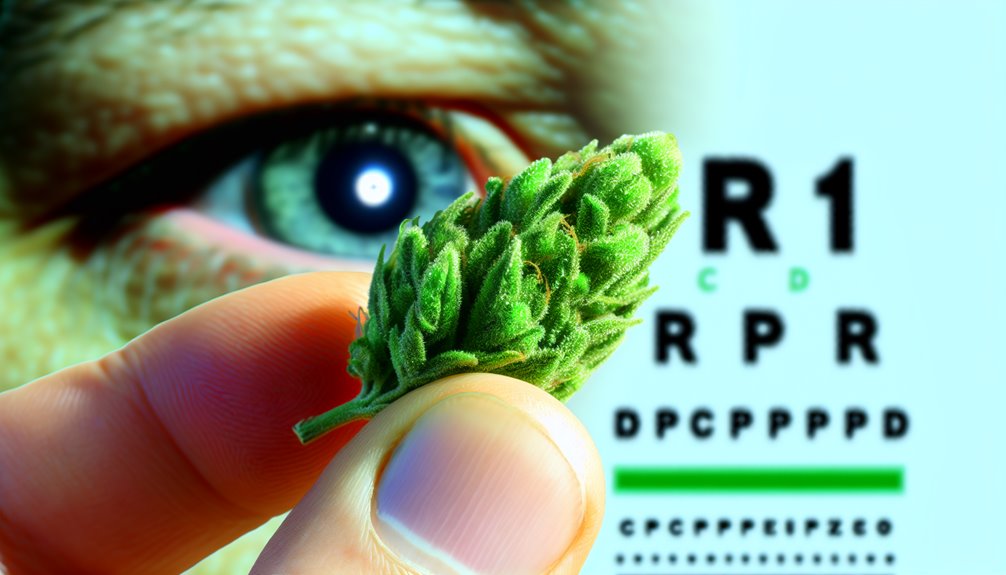
If you have a family history of glaucoma, it's vital to understand what this condition entails. Glaucoma is a progressive vision condition that damages the optic nerve, often linked to a buildup of pressure inside your eye. This glaucoma overview will help you comprehend the nature and dangers of this condition.
Glaucoma affects individuals later in life, with types ranging from open-angle to pigmentary glaucoma. Elevated intraocular pressure can cause optic nerve damage, leading to irreversible vision loss or even total blindness. The most insidious aspect of this disease is its silent progression; most people experience no early symptoms or pain, making regular eye exams important for detection. Understanding glaucoma is the first step in managing this silent thief of sight. It's also worth noting that glaucoma is more prevalent in African Americans, often occurring at younger ages compared to other racial groups.
The Science Behind Medical Cannabis
Diving into the science behind medical cannabis, it's essential to understand its chemical composition first. Medical cannabis comprises nearly 400 compounds, but the key players are THC and CBD. These interact with cannabinoid receptors throughout your body, including your eyes. THC, the psychoactive component, is known to lower intraocular pressure (IOP), a critical factor in glaucoma management. However, the effect is temporary, demanding frequent use for sustained relief. While CBD's role in glaucoma remains unclear, other cannabinoids and terpenes contribute to cannabis's therapeutic potential too. But remember, the chemical mix can vary greatly between products. Despite promising early research, more rigorous, controlled studies are needed to confirm cannabis's efficacy and safety in glaucoma treatment. A new study, the National Cannabis Study, aims to provide better quality data on the health impacts of therapeutic cannabis use, including its application in managing glaucoma symptoms. This research will track about 10,000 patients over a year of medical cannabis use, focusing on variables like chemical composition and delivery methods, among other things.
Medical Cannabis: Its Role in the Human Body
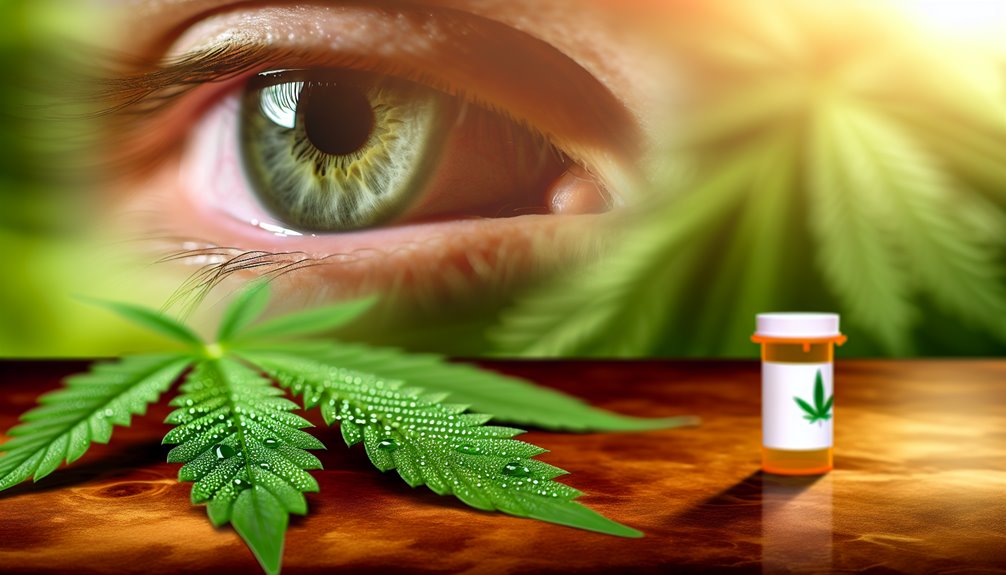
While considering the role of medical cannabis in the human body, it's essential to take into account both its therapeutic potential and adverse effects. Your body contains cannabinoid receptors, which interact with the cannabinoids in medical cannabis. This interaction has significant therapeutic potential, such as potentially interfering with tumor growth and offering relief for chronic conditions. However, it's important to be aware of possible risks. Consuming medical cannabis can lead to an increased heart rate, lung irritation, and impaired memory and judgement. Long-term usage may weaken your immune system and increase the risk of addiction. The key is finding a balance that maximizes the therapeutic benefits while minimizing the adverse effects. Always consult with a healthcare provider to determine the best approach.
The Connection Between Medical Cannabis and Glaucoma
Although it may seem surprising, medical cannabis has been found to have a significant impact on glaucoma symptoms. Research shows that cannabinoids, particularly Δ9-THC, can lower intraocular pressure (IOP) by about 25%. However, due to cannabis regulations and potential health risks, its use as a primary treatment for glaucoma is not recommended by leading medical bodies.
- Medical cannabis can lower IOP, a vital factor in glaucoma therapies.
- Current cannabis regulations and health risks limit its use in glaucoma treatment.
- Traditional glaucoma treatments remain superior in managing IOP continuously.
However, the future holds potential. Research into individual cannabinoids and synthetic analogues of THC may provide viable alternatives, redefining the connection between medical cannabis and glaucoma.
How Medical Cannabis Alleviates Glaucoma Symptoms
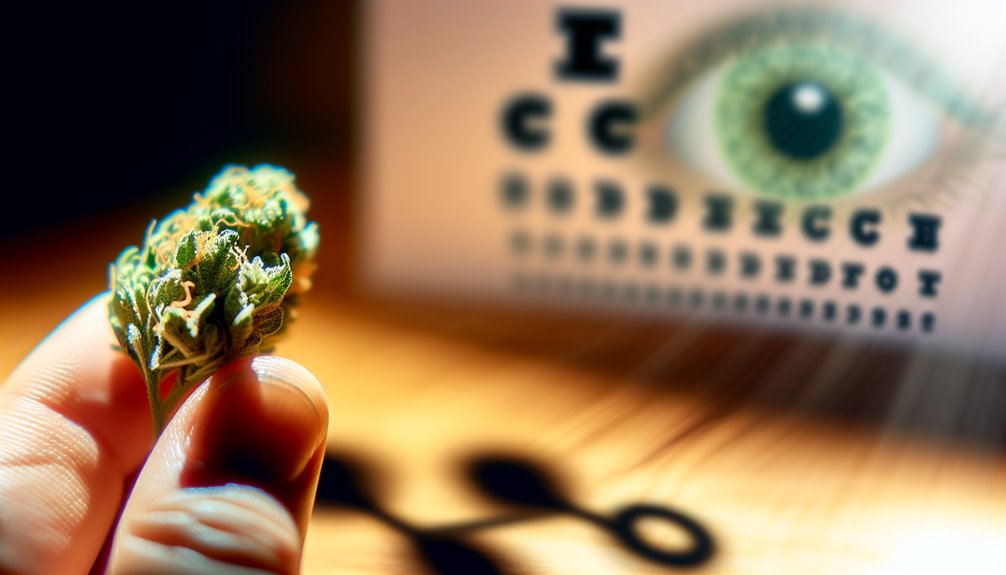
Despite the limitations and potential risks, it's important to understand how medical cannabis can alleviate glaucoma symptoms. Cannabis and its active ingredient, THC, have shown the ability to lower intraocular pressure (IOP) temporarily. This reduction is achieved through interaction with cannabinoid receptors in the eye, although the exact mechanism remains unclear. This effect occurs regardless of administration method, providing a brief period of relief for both glaucoma patients and healthy individuals. However, the therapeutic benefits are transient, necessitating frequent dosing for sustained relief. While cannabis holds potential in managing IOP, it's essential to remember that the benefits may be offset by decreased blood flow to the optic nerve, a consequence of cannabis-induced reduced blood pressure.
Effectiveness of Medical Cannabis in Glaucoma Management
You might be wondering how effective medical cannabis is in managing glaucoma. The truth is, while there's a certain allure to this natural remedy, it's not as straightforward as it may seem.
- Cannabinoid efficacy: It's true that medical cannabis can reduce intraocular pressure (IOP) in 60-65% of individuals, offering a temporary relief. However, this effect lasts only for 3 to 4 hours, requiring frequent administrations throughout the day.
- Comparative effectiveness: Conventional glaucoma treatments consistently outperform cannabis in maintaining a reduced IOP and protecting the optic nerve.
- Practicality and patient compliance: The need for frequent dosing and potential side effects pose significant challenges for patients, especially the elderly.
Potential Side Effects of Using Medical Cannabis for Glaucoma
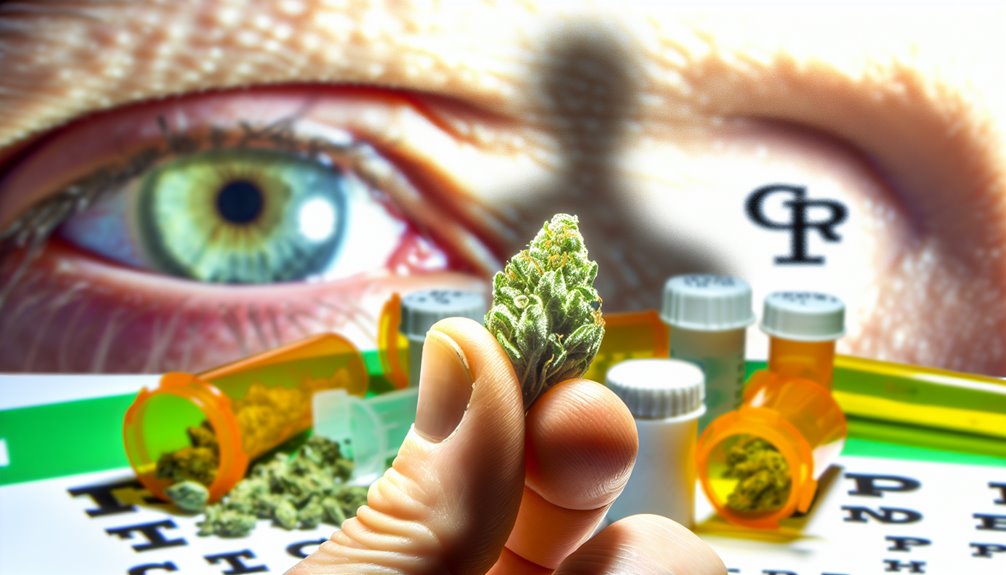
While medical cannabis might seem like an appealing alternative treatment for glaucoma, it's important to evaluate its potential side effects. The temporary reduction in intraocular pressure (IOP) requires frequent use, which might lead to systemic side effects like impaired cognitive and motor functions, impacting your daily activities. Cannabis interactions can also cause cardiovascular side effects like tachycardia and decreased blood pressure. Notably, the lowered blood pressure could reduce blood flow to the optic nerve, potentially exacerbating optic nerve damage. Local side effects include potential damage to the eyes or worsening vision over long-term use. Remember, major ophthalmological organizations do not recommend marijuana for glaucoma treatment due to these significant side effects and the impracticality of frequent use.
Current Research on Medical Cannabis and Glaucoma
Although medical cannabis has been scrutinized for its viability in managing glaucoma, it's clear that research has revealed some intriguing results. Current studies show that THC, the main active component in cannabis, can reduce intraocular pressure (IOP) by enhancing fluid drainage and decreasing production from the eye.
However, the benefits come with substantial challenges. Here are three key issues you should consider:
- The effects of cannabis on IOP are temporary, necessitating frequent use for sustained benefit.
- The American Academy of Ophthalmology questions the practicality of cannabis due to its short-lived effects and potential side effects.
- Current conventional glaucoma therapies outperform cannabinoids in efficacy and sustainability.
Despite the hurdles, ongoing research into cannabinoid interactions and glaucoma therapies holds promise for future breakthroughs.
Legal Aspects of Medical Cannabis Use in Glaucoma Treatment
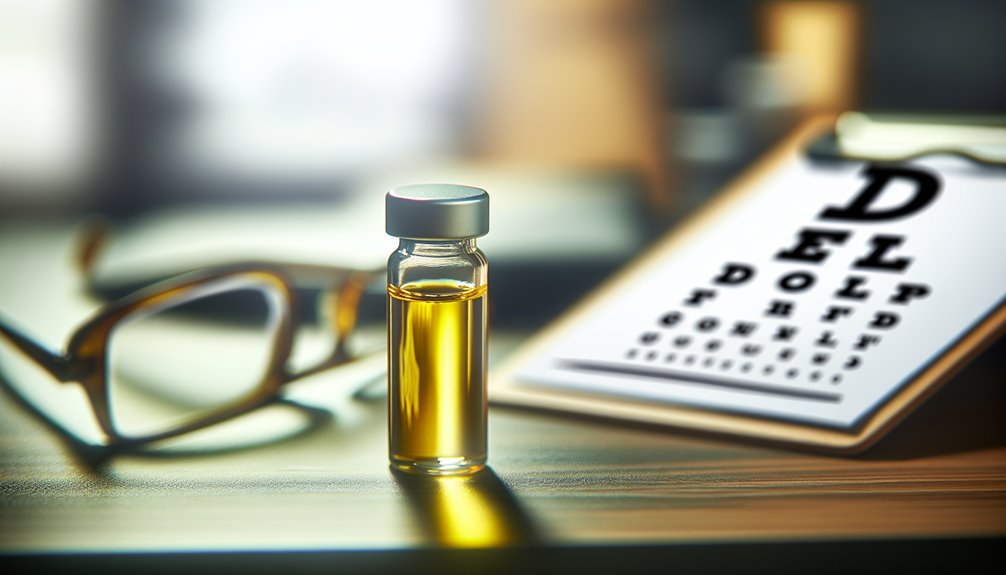
Despite the ongoing debates and numerous studies, medical cannabis remains a controversial treatment option for glaucoma. While it's legally accessible in several states, the FDA has not approved its use for glaucoma. Major ophthalmic organizations caution against marijuana due to its limitations and risks. Your advocacy as a patient is essential; pushing for further research and legal access is key. Remember, using marijuana for glaucoma may have significant side effects and can interact with other medications, so always inform your doctor. The medical community continues to stress the importance of clinical oversight to weigh potential benefits against known risks. Understanding these legal regulations and advocating for your health is vital in maneuvering the complex landscape of medical cannabis use in glaucoma treatment.
The Future of Medical Cannabis in Glaucoma Treatment
As we look to the future, it is vital to contemplate the potential of medical cannabis in managing glaucoma symptoms.
- Isolated Cannabinoids: Future therapies could uncover therapeutic effects of isolated cannabinoids, offering improved efficacy and fewer side effects.
- Synthetic Cannabinoid Analogs: Research into developing cannabinoid analogs holds the promise for longer-lasting effects with minimal side effects.
- Neuroprotective Properties: Some cannabinoids demonstrate potential in safeguarding the optic nerve, a significant aspect of managing glaucoma.
While current clinical evidence is limited, your role in embracing patient-centric approaches and advancing the understanding of medical cannabis in glaucoma treatment is pivotal. The path towards effective marijuana-based treatments requires committed research, open-mindedness, and a deep desire to serve and improve patients' lives.
Conclusion
Steering through glaucoma's stormy seas isn't easy, but medical cannabis might become a potential lifeboat. Yet, caution is our compass. Major organizations warn about possible cognitive and cardiovascular side effects. Like a double-edged sword, while THC can lower IOP, its effects are fleeting, requiring regular application. As we sail into the future, more research is needed to guarantee this lifeboat is safe and effective for all. Make certain you're guided by a healthcare professional on this journey.
If you're curious about how medical cannabis can help manage glaucoma symptoms, I invite you to visit Fells Point Cannabis Docs of Maryland. Our team is here to provide you with the information and support you need. You can also give us a call at (410) 401-4200. We'd love to help you navigate your options in a friendly and welcoming environment!
